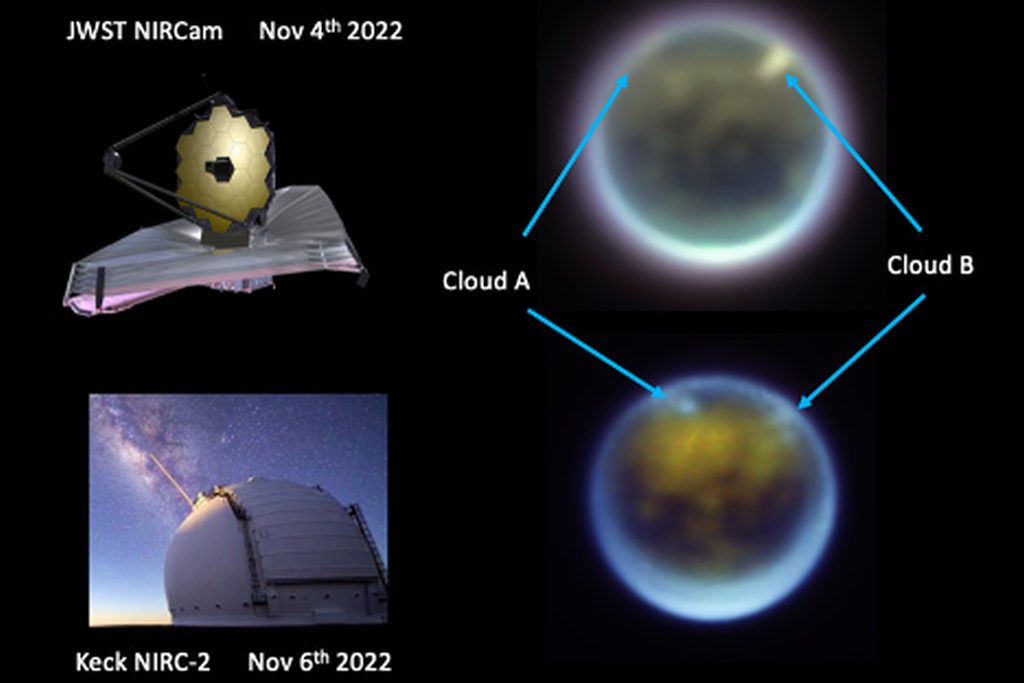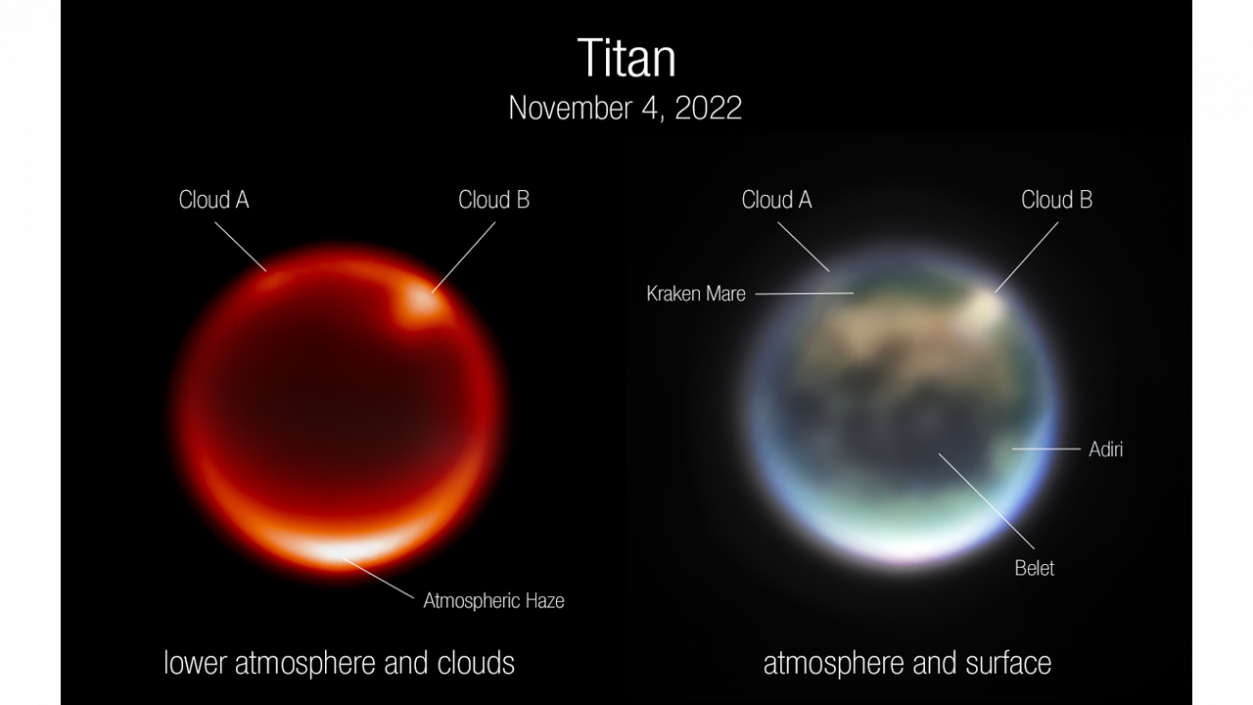It is ten times farther from the Sun than Earth, has a dense atmosphere, and its surface is varied in topography and dotted with lakes, seas, and even rivers: this is Titan. However, hydrocarbons (methane and ethane) on the lunar surface form lakes, and these compounds also create thick atmospheric haze that impedes visual observation.
At one point, NASA’s Cassini spacecraft, which is investigating the Saturn family, and Huygens, a separate, small European probe that was up and running that traveled with it, visited the Moon and landed successfully on Titan in January 2005. However, the Cassini mission ended. It’s 2017, and there’s still a long way to go until the next mission investigating this region of our solar system. This is why it is so important The capacity of the James Webb Space Telescope To make ultramodern observations from a distance thanks to its excellent technical capabilities.

Recordings were made two days apart. On the left side of the image is a James Webb image, and on the right is a follow-up image of the Keck Giant Telescope on Earth. Both were taken in near infrared, and although they don’t “see” the same way, the change in weather can be detected by comparing these two images.
Source: NASA, ESA, CSA, WM Keck Observatory, A. Pagan (STScI
On December 1, 2022, images taken by the space telescope a month ago were announced, on November 4 and 6, we can also observe changes in Titan’s cloud cover. Webb and operates in Hawaii Keck Giant Telescope As a result of their joint work, thanks to infrared wavelength observations, we can enjoy a spectacle that specialists have been waiting for for many years. Webb can not only look at the composition of the moon’s atmosphere, but also detect its weather, and also get some pictures of the surface, in the form of its dark and light regions. Titan is the only moon in the solar system with an atmosphere, which makes its observations particularly interesting.
A comparison of NIRCam’s near-infrared images taken on November 4 showed that a cloud could be seen in the moon’s northern hemisphere — soon after, another cloud was also successfully observed. This was important because it confirmed previous computer modeling of Titan’s weather.

Illustration of a cake advertisement with diagrams of the two tools. The blue arrows indicate the two clouds.
Image credit: NASA/STScI/Keck Observatory/Judy Schmidt
After it became clear that they had found clouds, the Keck telescope operators were told to follow up very quickly, and they were able to classify the observation two days later. He confirmed this: There were indeed clouds in Webb’s images, and the new observation also shed light on their changes. Although it can’t be said with certainty that the two telescopes saw the same clouds, or that new telescopes formed in similar places within a couple of days (seasonal lighting makes this possible anyway), we certainly are seeing monsoon weather. Once Keck’s recording was completed, the next step was the work of a specialist involved in modeling Titan’s atmosphere, as what was seen had to be interpreted.
The fact that Webb’s near-infrared spectrometer provided observations was also an additional aid in interpreting the recordings – with the help of this we can also see components of the atmosphere and the moon that would be impossible with ground observation due to an obstacle imposed by our atmosphere. Analysis of this data is still in progress, but if it is completed, we will know more about Titan’s lower atmosphere and the chemical composition of the surface. In addition to a later iteration of the existing instruments, in the summer of 2023, another web instrument called MIRI will also make observations at previously unseen wavelengths. This data may help reveal why Titan has an atmosphere at all.






